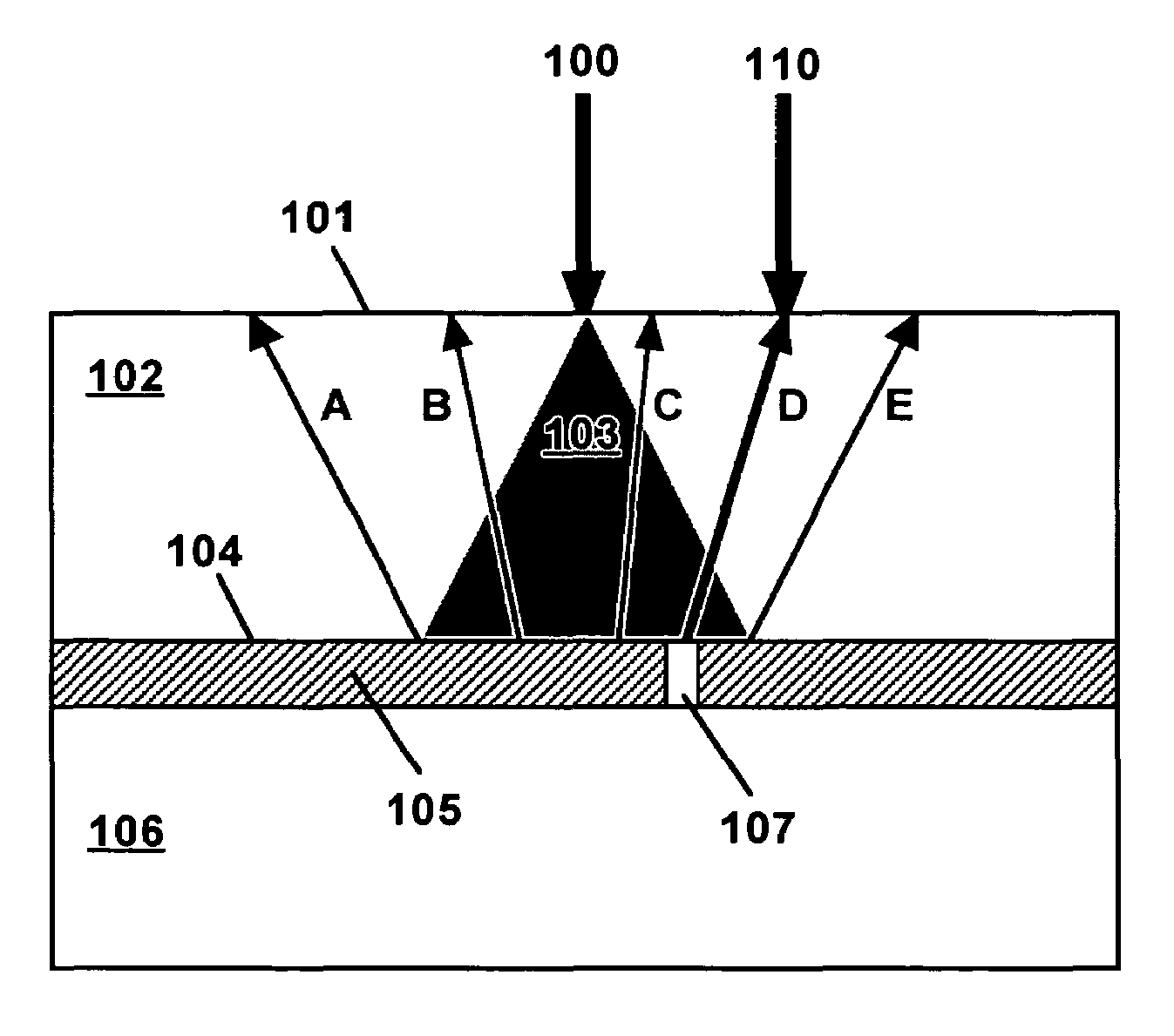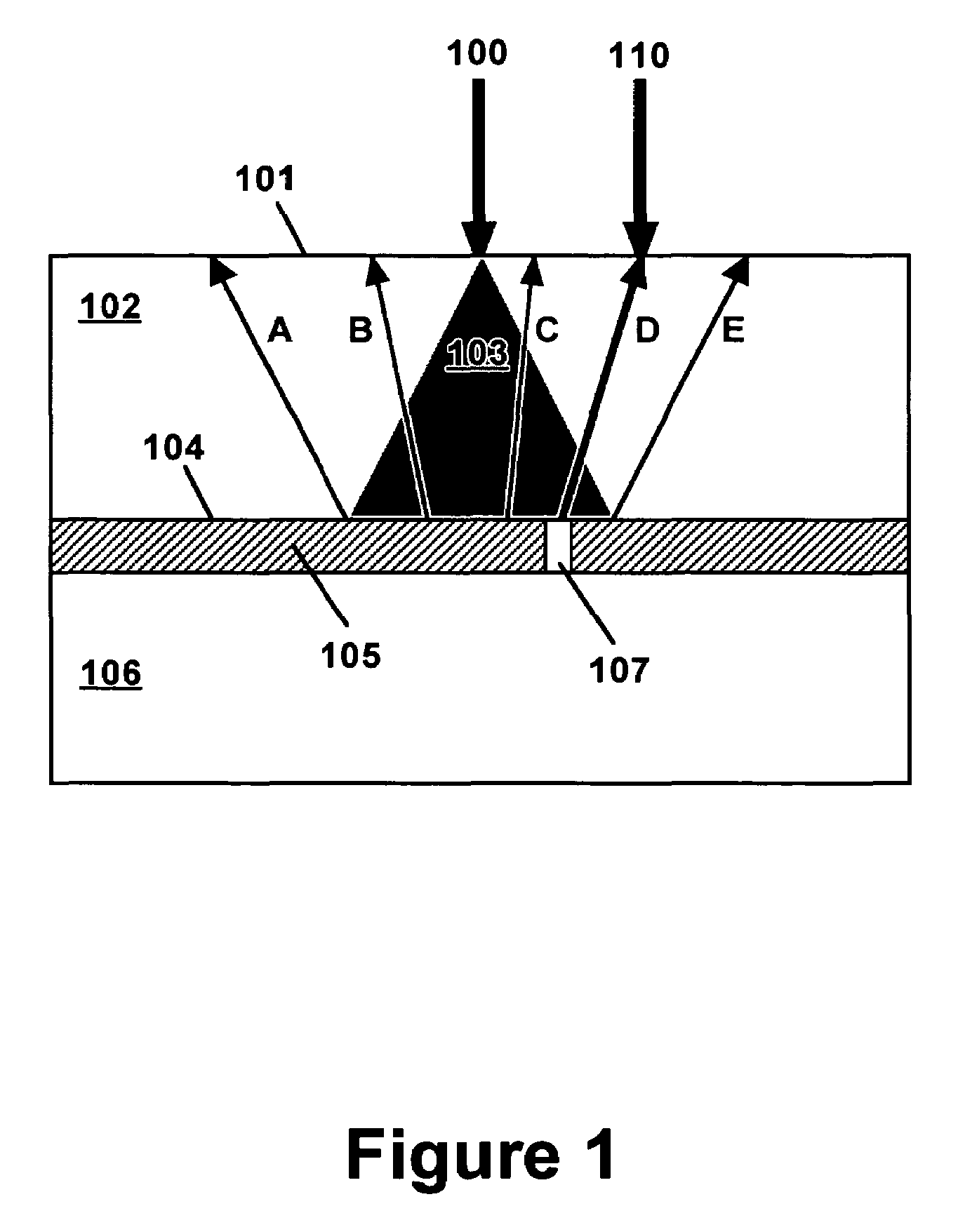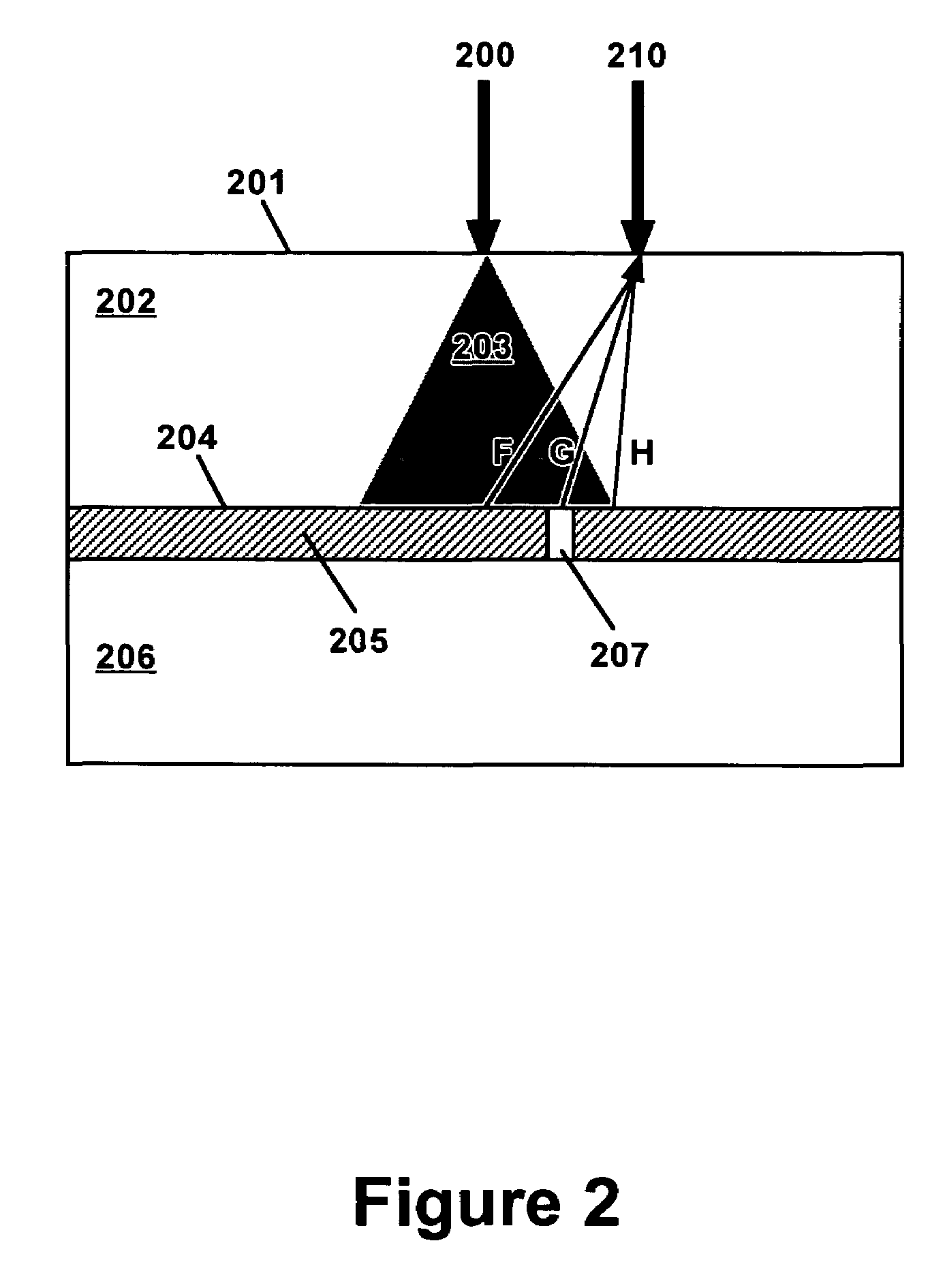Laser-ultrasonic detection of flip chip attachment defects
a flip chip and ultrasonic technology, applied in the field of electronic assembly, can solve the problems of premature failure, limited device switching speed, and inability to provide the needed number of input/output connections, etc., to achieve high defect sensitivity and resolution, improve the reliability of flip chip parts, and increase the yield of flip chip assembly processes.
- Summary
- Abstract
- Description
- Claims
- Application Information
AI Technical Summary
Benefits of technology
Problems solved by technology
Method used
Image
Examples
Embodiment Construction
[0023]The present invention provides a laser-ultrasonic method and device that are useful for detection of defects in the underfill and solder ball attachments between a flip chip and a substrate. A flip chip includes an area array of solder balls between contact pads on the flip chip and contact pads on the substrate. The solder ball attachment is typically made by reflow soldering. The substrate may comprise any polymer-based material, FR4 material, for example, or any ceramic material, alumina, for example. The present invention may be applied to detection of attachment defects for flip chips comprising any semiconductor material, including silicon, germanium, gallium arsenide, indium phosphide, and silicon carbide. Attachment defects that may be detected include underfill voids, underfill disbonds, missing solder balls, disbanded solder balls, and solder balls with insufficient solder mass.
[0024]In this document, the term “flip chip” is used in the broadest sense and includes an...
PUM
| Property | Measurement | Unit |
|---|---|---|
| wavelengths | aaaaa | aaaaa |
| wavelength | aaaaa | aaaaa |
| wavelength | aaaaa | aaaaa |
Abstract
Description
Claims
Application Information
 Login to View More
Login to View More - R&D
- Intellectual Property
- Life Sciences
- Materials
- Tech Scout
- Unparalleled Data Quality
- Higher Quality Content
- 60% Fewer Hallucinations
Browse by: Latest US Patents, China's latest patents, Technical Efficacy Thesaurus, Application Domain, Technology Topic, Popular Technical Reports.
© 2025 PatSnap. All rights reserved.Legal|Privacy policy|Modern Slavery Act Transparency Statement|Sitemap|About US| Contact US: help@patsnap.com



